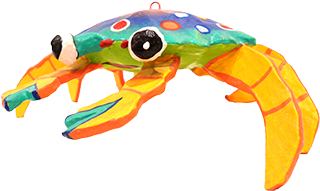When should I consider antibiotics for my child’s cold?
Colds are usually caused by viruses. Antibiotics are used only for bacterial infections. Occasionally a cold can develop into a bacterial infection, such as an ear or sinus infection. In that case, antibiotics may be used. Antibiotics have potentially serious side effects. There is a risk of severe diarrhea or an allergic reaction. There is also the risk of developing resistant bacteria when antibiotics are overused or used inappropriately.
If my child’s mucous is yellow or green, do they need antibiotic?
No. Initially, most colds go through a phase when the nasal secretions appear thick and green, usually at the beginning or end of the cold. It may also occur in the morning when the secretions tend to be drier. If the green or yellow color of the discharge persists more than 3 to 4 days, an office visit would be advised.
What medications can I use to treat my child’s cold?
There is no cure for the common cold. Treatment is, therefore, supportive, depending on your child’s symptoms. The goal is to make the child comfortable while the body fights the virus on its own. Hot steam baths, nasal saline drops, a humidifier, rest and lots of fluids may help alleviate the symptoms and promote recovery of a cold. In older children using over the counter cold remedies may sometimes help the symptoms of a cold but they should not be used in children younger than 6 years of age.
How high of a fever is dangerous to my child?
Fever, in and of itself, is not dangerous to a child. However, what is causing the fever may be dangerous. Most fevers in children are caused by viruses.The fever is the way the body fights the virus that is causing the infection. Sometimes there is a more serious cause of a fever in a child. In these situations, the child usually appears quite ill. If the child is playful and active, there is no absolute number above which one must get concerned. Many children with fevers of 103 to 104 F are quite energetic and active. However, if the child has a temperature of 101 and is listless and lethargic, there is certainly a cause for concern.
What is the best way to take my child’s temperature?
The most accurate temperature will be obtained using a rectal thermometer, especially in infants. Oral thermometer readings are usually accurate in older children. Ear thermometers may produce erratic results and are only acceptable for older children. Normal temperature rectally is between 97.6 to 100.3 (36-38 C).
My child woke up in the middle of the night with croupy cough. What can I do?
Barking or croupy cough is usually a sign of laryngitis-generally a mild and self-limited condition. If your child cannot sleep or has loud breathing, you can use a steam treatment-simply steam up a bathroom and stay there for 10 -15 min. Cold air also helps on cold nights a simple walk outside can be helpfull. If your child is having trouble breathing either contact the doctor on call or call 911.
How long is my child contagious?
Contagiousness differs depending on the type of infection your child is having. For minor viral illnesses your child should stay away from other children and school for as long as he or she has a fever. If your child only has a runny nose and cough, he or she should not be excluded from group activities. You can call our office for detailed information on specific infections.
What do I do if my child is vomiting?
As long as the vomiting is not green, and there is no blood, and it is not accompanied by high fever or severe stomach pains the main goal of treatment is preventing dehydration. Get clear Pedialyte, Pedialyte popsicles, or Gatorade for older children and feed very small amounts (3-5cc) very frequently, ideally every 2-5 min until larger amounts are tolerated. Call the office if any of the above occurs or if you think your child may be dehydrated.

